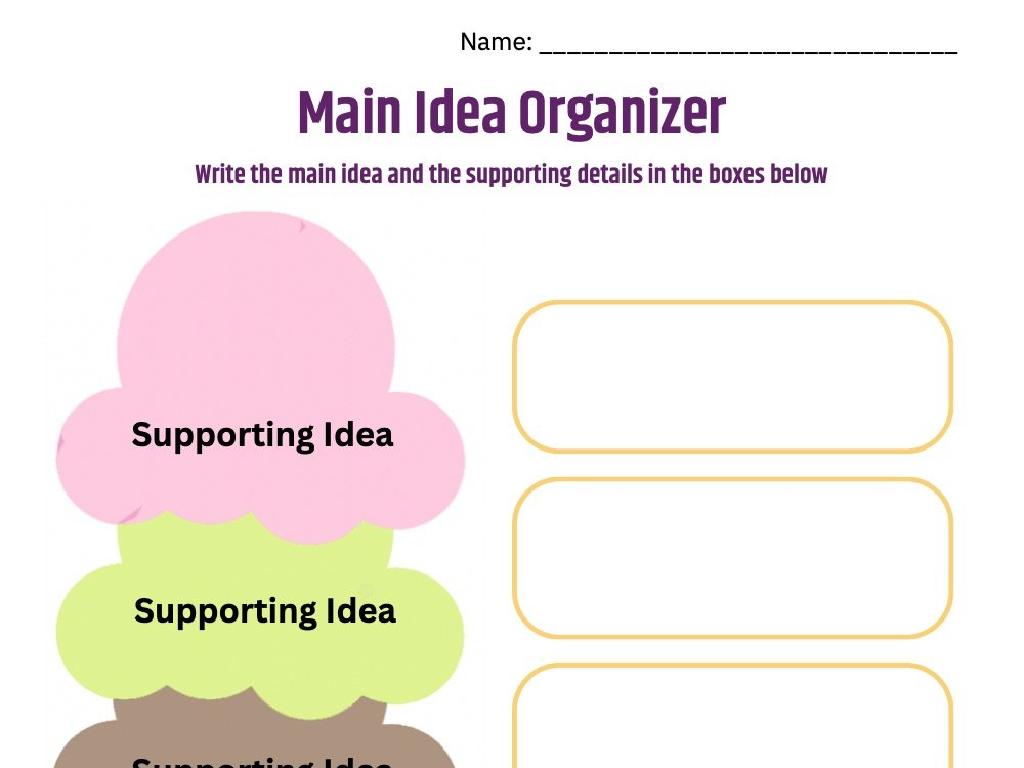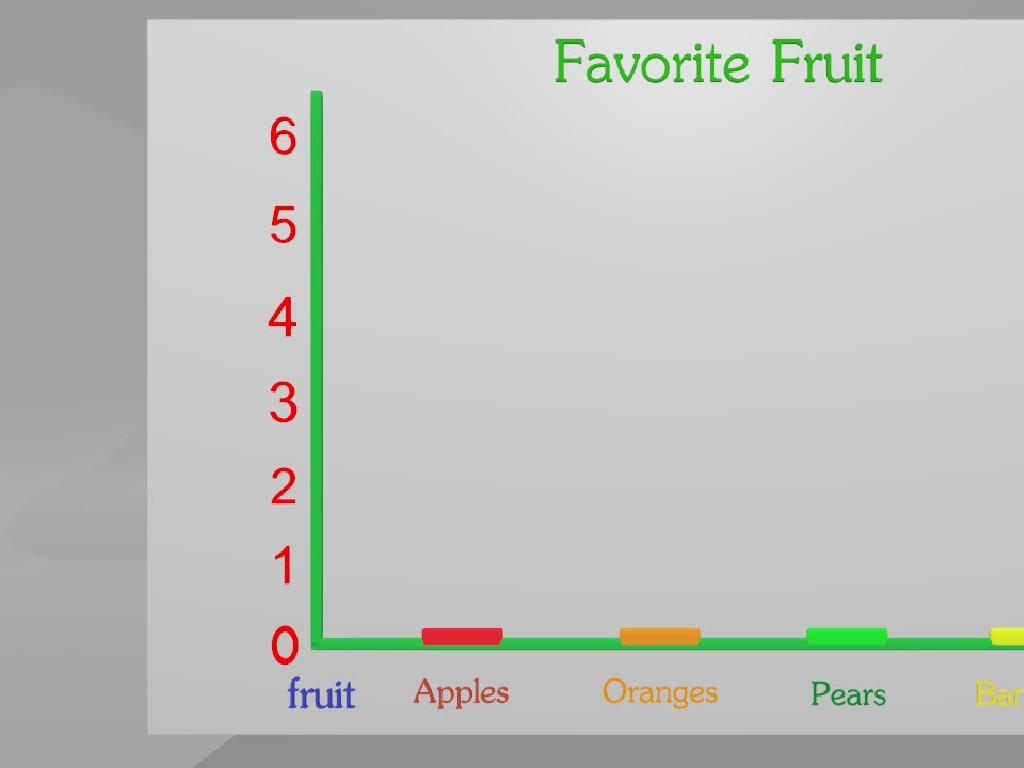Solve One-Step Equations
Subject: Math
Grade: Eighth grade
Topic: One-Variable Equations
Please LOG IN to download the presentation. Access is available to registered users only.
View More Content
Introduction to One-Step Equations
– Define one-step equations
– An equation with one operation to solve, e.g., x + 3 = 7
– Significance in algebra
– Fundamental for solving complex problems
– Real-world equation uses
– Used in budgeting, cooking, and construction
– Mastering for advanced math
|
This slide introduces the concept of one-step equations, which are the simplest form of equations in algebra involving only one operation either addition, subtraction, multiplication, or division. Understanding these equations is crucial as they form the foundation for more complex algebraic concepts. Emphasize the importance of mastering one-step equations for success in higher-level math. Provide real-life examples where these equations are applicable, such as calculating change while shopping, adjusting a recipe, or determining the amount of material needed for a construction project. Encourage students to see the relevance of algebra in everyday life and to approach these problems with confidence, knowing they have practical applications.
Solving One-Step Equations
– Define a one-step equation
– An equation that requires one operation to solve
– Examples of one-step equations
– For instance, x + 5 = 12 or 7y = 21
– Understanding the solving goal
– To isolate the variable on one side
– Applying inverse operations
– Use subtraction, addition, multiplication, or division as needed
|
This slide introduces the concept of one-step equations in algebra. A one-step equation is a basic algebraic equation that can be solved with a single operation, such as addition, subtraction, multiplication, or division. Provide examples of one-step equations to illustrate the concept. Emphasize that the goal of solving any equation is to isolate the variable, making it alone on one side of the equation. Demonstrate how to apply inverse operations to both sides of the equation to maintain balance and solve for the variable. Encourage students to practice with various one-step equations to become comfortable with the process. This foundational skill will be crucial for solving more complex equations in the future.
Solving One-Step Addition Equations
– Identify addition in the equation
– Isolate variable using subtraction
– Subtract 5 from both sides to find x
– Example: x + 5 = 12
– What value of x makes this true?
– Solve: x = 12 – 5
– x equals 7, verifying our solution
|
This slide introduces the process of solving one-step equations that involve addition. Start by identifying the addition operation within the equation. To isolate the variable, teach students to perform the inverse operation, which is subtraction in this case. Use the example x + 5 = 12 to demonstrate the process. Subtract 5 from both sides of the equation to solve for x, resulting in x = 7. Emphasize the importance of maintaining the balance of the equation by performing the same operation on both sides. Encourage students to check their answers by substituting the value of x back into the original equation. Provide additional practice problems for students to reinforce the concept.
Solving Subtraction Equations
– Identify subtraction in equations
– Use addition to isolate variable
– To find the variable, add the opposite of the number subtracted from it
– Example: x – 3 = 7
– In x – 3 = 7, add 3 to both sides to isolate x
– Solve for x by adding 3
– Adding 3 to both sides gives x = 7 + 3, so x = 10
|
This slide focuses on solving one-step equations involving subtraction. Students should first identify the subtraction operation within the equation. Then, they will learn to use the inverse operation, addition, to isolate the variable on one side of the equation. For example, in the equation x – 3 = 7, students should add 3 to both sides of the equation to solve for x. This will give them x = 10. It’s crucial to emphasize that whatever operation is performed on one side of the equation must also be done to the other side to maintain balance. Encourage students to practice with various subtraction equations to become comfortable with this process.
Solving Multiplication Equations
– Identify multiplication in equations
– Look for a number next to a variable, like 4x
– Use division to find the variable
– Divide both sides by the number to get x alone
– Example: Solve 4x = 20
– Dividing both sides by 4 gives x = 5
|
This slide introduces the process of solving one-step multiplication equations, which is a fundamental skill in algebra. Start by identifying the multiplication operation, which is indicated by a number directly next to a variable. To solve for the variable, students will learn to perform the inverse operation, which is division in this case. By dividing both sides of the equation by the number that is multiplied by the variable, students can isolate the variable and find its value. The example 4x = 20 is a straightforward equation where dividing both sides by 4 yields the solution x = 5. Encourage students to practice with additional examples and to check their answers by substituting the value of x back into the original equation.
Solving Division Equations
– Identify division in equations
– Isolate variable using multiplication
– To undo division, multiply by the same number
– Example: x/5 = 3
– Given equation: x divided by 5 equals 3
– Solve: Multiply both sides by 5
– x = 3 * 5, so x equals 15
|
This slide focuses on solving one-step equations that involve division. Students should first learn to recognize the division operation within an equation. The next step is to use the inverse operation, multiplication, to isolate the variable. For example, in the equation x/5 = 3, multiplying both sides by 5 will cancel out the division by 5 on the left side, leaving the variable x alone. On the right side, 3 multiplied by 5 gives us 15, so x equals 15. It’s crucial for students to understand the concept of inverse operations and how they can be used to solve equations. Practice with additional examples and encourage students to explain the process in their own words to solidify their understanding.
Practice Problems: One-Step Equations
– Solve equations as a class
– Student participation on the board
– Invite students to solve problems on the board for hands-on learning
– Discuss each solution step
– Go through the solution process and reasoning behind each step
– Encourage questions and discussions
– Create an interactive environment for better understanding
|
This slide is designed to engage students in active participation by solving one-step equations as a class activity. Encourage students to come up to the board to solve the equations, fostering a hands-on learning experience. As each student presents their solution, discuss the steps they took and the reasoning behind each move. This will help reinforce their understanding of solving equations. Make sure to create a supportive atmosphere where students feel comfortable asking questions and engaging in discussions. Provide immediate feedback and guidance to ensure that the learning objectives are met. Possible activities could include solving equations with different operations (addition, subtraction, multiplication, division), using real-life scenarios to frame the equations, or creating a friendly competition with small rewards for correct solutions.
Class Activity: Equation Race
– Split class into competitive teams
– Each team tackles one-step equations
– Equations like x + 3 = 10 or 7y = 21
– First team with correct solutions wins
– Points awarded for speed and accuracy
|
This activity is designed to encourage teamwork and reinforce the concept of solving one-step equations. Divide the class into small groups, ensuring a mix of abilities in each team. Provide each team with a set of one-step equations, ensuring a variety of types (addition, subtraction, multiplication, division). The first team to solve all their equations correctly earns a point. Emphasize the importance of accuracy over speed to prevent careless mistakes. Possible variations of the activity could include a relay race format, timed challenges, or incorporating physical activities between solving equations. This will keep the students engaged and provide a fun, competitive atmosphere to practice their math skills.
Homework: Mastering One-Step Equations
– Complete the assigned worksheet
– Worksheet includes a mix of problems
– Practice one-step equations at home
– Reinforce today’s lesson with extra practice
– Review solutions and methods
– Ensure understanding of solving techniques
– Preview next topic: Two-step equations
– Get a head start on upcoming concepts
|
The homework assignment is a worksheet that contains a variety of one-step equations to solve. This will help students reinforce the concepts learned in class and provide additional practice to solidify their understanding. Encourage students to review the methods for solving one-step equations and to check their answers for accuracy. Remind them that practice is key to mastery. Additionally, give a brief introduction to two-step equations, which will be the next topic of study, to prepare them for the upcoming lessons. Provide tips on how to approach more complex equations and encourage them to be proactive in their learning.





